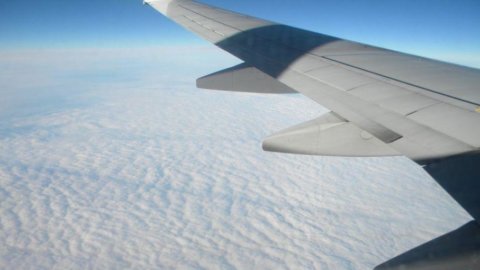ENAV, the company that manages civil air traffic in Italy, starting from Thursday 24 May will allow all aircraft crossing the national skies to be able to plan a direct route from an entry point to an exit point of the Italian airspace without referring to the route network, even below 11.000 meters up to 9.000 meters.
The procedure introduced by ENAV under the name Free Route allows airlines to fly along the ideal route without trajectory constraints. The consequence are the benefits in terms of flight efficiency, reduction of fuel consumption and therefore lower harmful emissions into the environment.
Il Free Route it is a procedure envisaged by the Community regulations of the Single European Sky to which all European countries must comply by 2022. Enav was ahead of the game and with 4 years of advantage on the European calendar was the first among the large continental service providers to adopt this procedure since December 2016, initially above 11.000 meters of altitude.
Now the new breakthrough. According to company estimates, in 2018, thanks to the lowering of the altitude Free Route 70.000 flights will benefit, with an average saving per flight of around 22,8 km for a total of over 1.630.000 km less traveled per year and a consequent fuel saving of around 7 million kg with 21 million kg less CO2 released into the environment. The overall benefit expected for the airlines is quantifiable at around 5 million euro. So much so that CEO Roberta Neri said that “guaranteeing the best service in maximum safety to all companies flying over Italian skies. But today we are also called to do so with an increasingly customer-oriented approach”.
In 2017 with the Free Route above 11.000 meters, the airlines that have crossed the national airspace have saved 30 million kg of fuel with lower CO2 emissions by 95 million kg. It should be considered that of the more than 1,8 million movements that ENAV managed in 2017, 30% are cross-only flights, i.e. flights that do not land or take off from a national airport.





